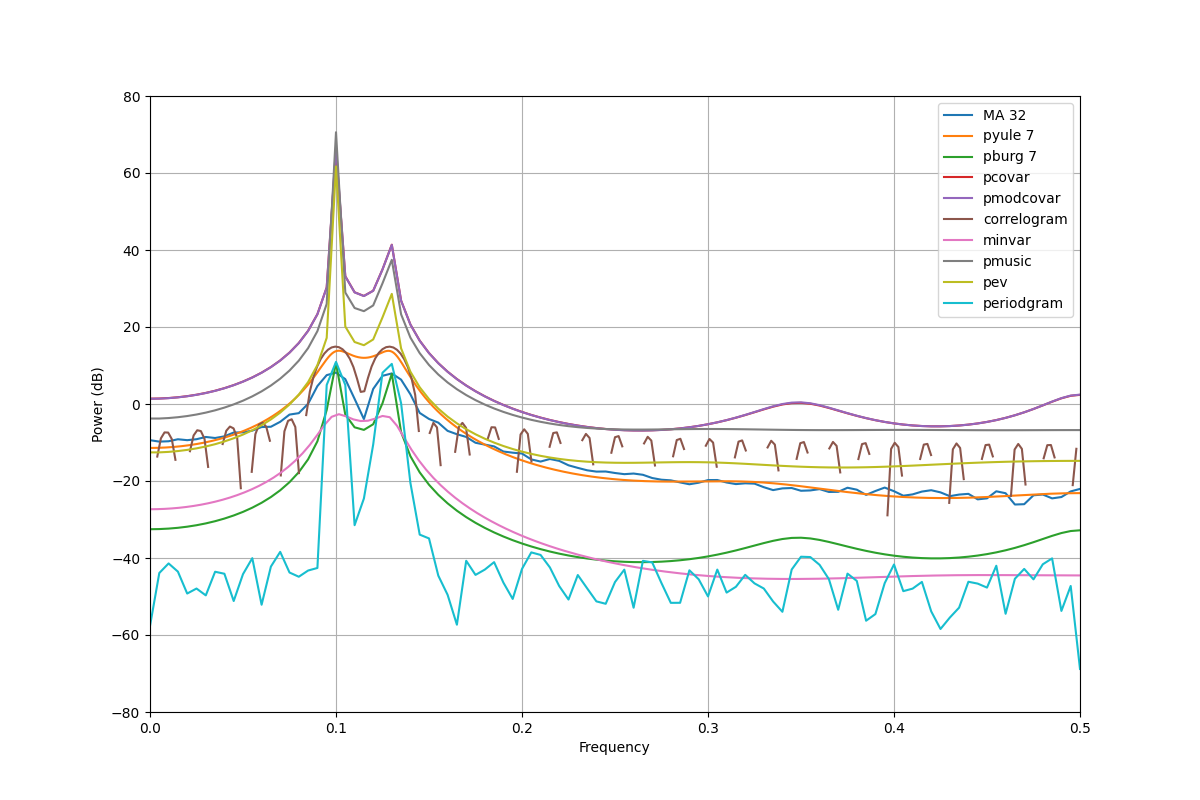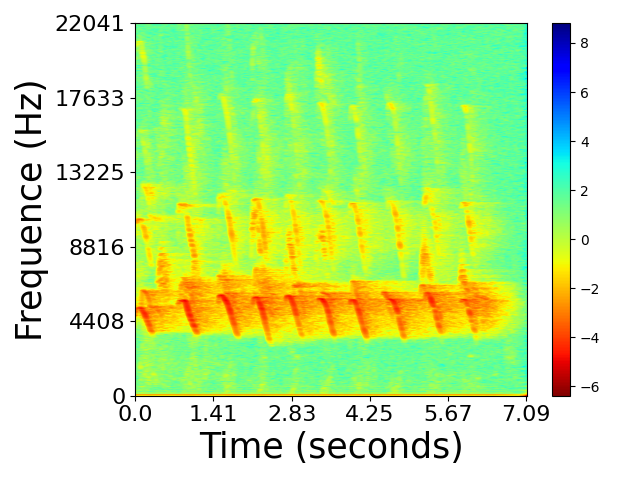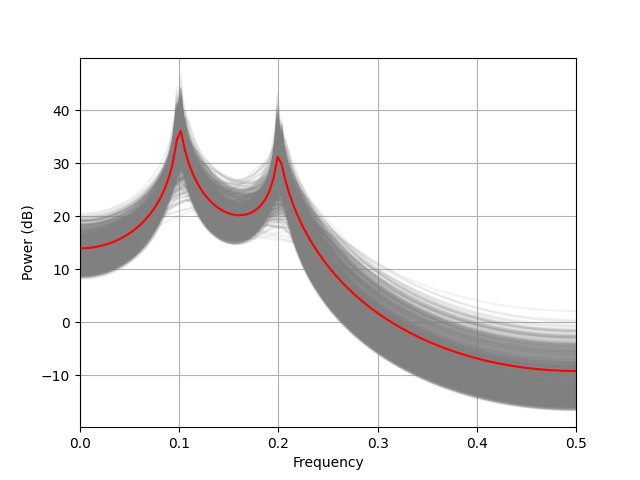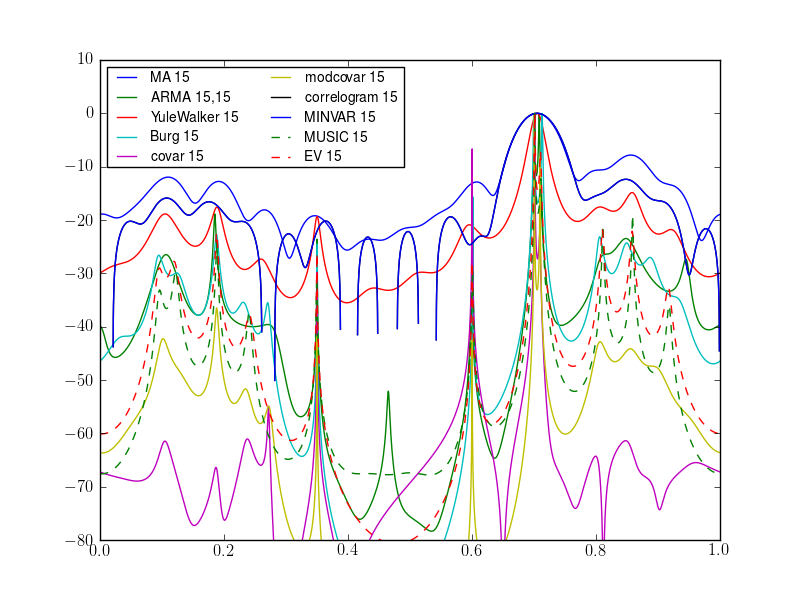Spectrum: a Spectral Analysis Library in Python

| Citation: | Cokelaer et al., (2017). ‘Spectrum’: Spectral Analysis in Python. Journal of Open Source Software, 2(18), 348, doi:10.21105/joss.00348 |
|---|---|
| Contributions: | Please join https://github.com/cokelaer/spectrum |
| Contributors: | https://github.com/cokelaer/spectrum/graphs/contributors |
| Issues: | Please use https://github.com/cokelaer/spectrum/issues |
| Documentation: | http://pyspectrum.readthedocs.io/ |
Spectrum is a Python library that contains tools to estimate Power Spectral Densities based on Fourier transform, Parametric methods or eigenvalues analysis. The Fourier methods are based upon correlogram, periodogram and Welch estimates. Standard tapering windows (Hann, Hamming, Blackman) and more exotic ones are available (DPSS, Taylor, …). The parametric methods are based on Yule-Walker, BURG, MA and ARMA, covariance and modified covariance methods. Non-parametric methods based on eigen analysis (e.g., MUSIC) and minimum variance analysis are also implemented. Finally, Multitapering combines several orthogonal tapering windows.
Quick installation
conda install spectrum
Examples
Visit our example gallery or jump to the main documentation
Targetted audience
The targetted audience is diverse: the use of power spectrum of a signal is fundamental in electrical engineering (e.g. radio communications, radar), it has a wide range of applications from cosmology (e.g., detection of gravitational waves in 2016), to music (pattern detection) or biology (mass spectroscopy).
Documentation¶
License¶
Spectrum is released under a BSD3 license



